![Swan 48 Avocation under sail]()
Editor’s Note: Those studying my recent account of Lunacy‘s passage from Puerto Rico to Bermuda may have noticed that we did NOT find that abandoned Swan 48, Wolfhound, ex-Bella Luna , that I blogged about earlier. Ah, well… You can’t always find that needle in the haystack, but I can deliver on my promise to tell you about the time I delivered a Swan 48 down to the islands.
I HAD OFTEN delivered boats from the northeastern U.S. to the West Indies in early November. I had also done northbound trips from the Indies to New England in the spring. But I had never before been asked to take a boat south to the Caribbean in early April. Why, pray tell, would anyone want to do this? The answer, not surprisingly, involved a racing schedule.
The boat in question, Avocation, a Swan 48 that had recently changed hands, was now being managed by Hank Schmitt, of Offshore Passage Opportunities, and he planned to campaign the boat at Antigua Race Week. He needed to have it in St. Maarten by Thursday, April 21 (this was in 2005), so he could fly in and take it to Antigua in time for the start of Race Week on Sunday, April 24.
I met Hank and the boat at his home base in Huntington, Long Island, early on the morning of Wednesday, April 6. Hank had already assembled a pay-to-play crew, the members of which slowly trickled on to the scene as we attended to a few last-minute chores that afternoon. They were an excellent mix. We had two young deck-apes, Jordan and Nathan; two middle-aged sailors, John (a member of the U.S. Army Special Forces) and Keith (a small-business owner from Florida); plus one seasoned offshore veteran, Jim.
The weather charts I downloaded that evening were pretty bleak. The forecast was for a deep low generating gale-force winds to appear in the waters between Bermuda and the eastern U.S. on Saturday, April 9, right about the time I expected we’d be crossing the Gulf Stream. If I were in cruising mode, of course, I would have waited patiently for this low to pass, but since we were in delivery mode, and a no-go decision now meant that Hank could not possibly race at Antigua, I felt we had no choice but to set out as planned early on the morning of Thursday, April 7.
We screamed down Long Island Sound. Though conditions were initially light, by 1400 hours a moderate southwesterly had filled in. Flying full sail on a broad reach, we maintained speeds of over 9 knots all through the afternoon into the early evening. By 1640 hours we had cleared Plum Gut; by 1800 hours we had cleared Montauk and were reefed down in open water, close-reaching into what had become a quite brisk 25-knot breeze. The sea was very lively, and by sunset most of the crew was seasick.
The wind stayed strong until about noon the following day, moderated as it shifted south, then shifted southwest and became very light late in the day. Through all of this, we motorsailed aggressively, as I wanted to keep our speed at 7 knots or better in hopes of crossing the Stream before the arrival of the forecast gale.
The Proverbial Fan and What Hit It
The crew member who suffered the most from seasickness was John (or “Johnny Army,” as Nathan called him), our Special Forces man. A veteran of tours in both Afghanistan and Iraq, he later paid me what I considered to be an immense compliment when he described our voyage together as one of the most miserable experiences of his life. In spite of his malaise, however, he did everything I asked of him. He also anointed himself weather-data specialist and made repeated attempts to download charts en route via his government-issue Iridium satellite phone. He had practiced doing this on shore before joining the boat, but for some reason was unable to download data while offshore.
As a result, we didn’t know what to expect when Saturday, April 9, arrived. Would the gale materialize, or not? We had rain and a light southerly all through the day and, again, motored to keep our speed up. After midnight, however, the wind shifted southeast, dead against us, and started building. Soon it was blowing 30 knots, and again we reefed the boat down. It wasn’t quite a gale, but it was bad enough. There was still a lot of Gulf Stream current flowing under us, and the seas were very lumpy. Sailing closehauled on port tack under a double-reefed main and staysail, we had the starboard rail well buried and nobody aboard felt very happy.
In the midst of all this, not long after we shortened sail, I was awakened from a fitful sleep by a cry from the cockpit: “The instruments are out!”
I shouted up to the watch on deck to cope as best they could, then rushed to the nav desk, on the lee side of the boat, to check the electrical panel. My heart sank when my right foot landed in a large puddle of water as I slid in behind the desk. Then came the telltale scent of smoldering wiring. After lifting several floorboards, I soon figured out what was going on. We were taking on quite a bit of water, which was pooling up all along the lee side of the boat. Under the nav seat, low down on the starboard side, there was a collection of small step-down voltage converters, several of which were now submerged.
After checking the through-hulls, the prop shaft, and the rudder post, I concluded the water must be from some deck leak that was active only when the boat was well heeled. How to get rid of the water was another problem. Shallow bilges may help a boat sail fast, but they are nothing but trouble if you are taking on water under sail. With the boat well heeled, the intakes for both our electric and manual bilge pumps, located on the centerline in a shallow sump, were barely awash and could not pick up the bulk of the water on our lee side. The pumps could be used to keep more water from coming aboard, but they could not pump the boat dry.
As the sun rose Sunday morning, I was debating what to do about this. One option was to heave to and stand the boat up straight enough for the pumps to work. To keep the boat dry, however, I would have to do this repeatedly, which would slow us down. Another option was to re-route the manual bilge-pump’s intake line to the lee side of the boat where it could do some good. By 0900 hours, however, the question was moot, as conditions moderated and the boat’s heeling eased enough for the pumps to be useful again. Taking stock of our situation, I found we had lost all of our navigation instruments (but not the GPS, which fortunately was on a separate circuit), our autopilot, our VHF radio, and our 12-volt outlet, which we had been using to charge our two handheld satellite phones. We also found that the genoa leech was thoroughly shredded. This, presumably, happened while we were furling the sail in high winds the night before.
![At sea on Avocation]()
Jim enjoys some quality time on deck during our rough passage to Bermuda
Sunday night the sky was clear enough that we saw some stars, the first of our passage. All through Monday, we had a moderate northerly (at last!) pushing us along on a nice broad reach, really our first pleasant day of offshore sailing so far, and by 2200 hours Bermuda was in sight. During our final approach, I had a long debate with Bermuda Radio on our spare handheld VHF. Their ironclad policy was that boats entering St. Georges at night could not lie at the customs dock, but must instead anchor out in relatively deep water on the south side of the harbor and wait for customs to open in the morning. I was nervous about anchoring, however, because we were now pretty tired, we had no depthsounder, and I had a hunch our anchor windlass wasn’t working. (Hank had warned me it had not been inspected or tested since the boat was purchased.) In the end, I elected to heave to and wait outside for daylight, and Bermuda Radio apologized profusely for their intransigence.
As soon as the sun rose Tuesday morning, we eagerly got ready to enter the harbor. Almost instantly, however, one small problem presented itself. We unexpectedly ran out of fuel and had to switch tanks before motoring through Town Cut.
Damage Control in Bermuda
My hunch, it turned out, was correct. On testing the windlass in St. Georges, I found it exhibited unique symptoms. That is, it could drop chain, but could not pick it up. As soon as the windlass received power, it started merrily spooling chain overboard, and the only way to stop it, I soon learned on sprinting to the bow to seize the handheld control, was to keep a thumb firmly planted on the UP button. No matter how hard I pressed UP, however, the device refused to reel chain back in. Unfortunately, I was alone on the boat when I discovered this and so found myself trapped at the bow, unable to shut off the power, with the windlass control clutched in my hand.
Just then a tourist appeared on the wall where we had tied up the boat. “Where have you come from?” she asked in a congenial tone.
“Here, lady,” I answered eagerly, proffering the control unit. “Can you hold this for a minute???”
I also discovered the windlass could not be operated manually, which meant, in effect, we had no windlass at all. I had better luck, however, dealing with our other problems. Steve Hollis of Ocean Sails, truly a prince among sailmakers, agreed to repair our genoa leech on a very expedited basis. I also discovered the headsail furling line was very badly chafed in one spot, so I replaced it. Some minor damage to the mainsail leech was repaired with tape. Some sections of the overhead down below, which were continually falling down due to tired Velcro fasteners, were permanently screwed back into place.
![St. Georges, Bermuda]()
St. Georges, Bermuda. We spent our visit here tied up on the bit of wall behind the red skiff
But the big issue, of course, was the electronics. At first I assumed we’d have to proceed without these, but after poking around I found the voltage converters under the nav seat could be easily interchanged. The converters were necessary, because Swans, like many contemporary European boats, have 24-volt house power systems. This facilitates the feeding of hungry devices like bow-thrusters, electric winches, and our useless windlass, but means that power for common electronics–such as depthsounders, wind instruments, stereo systems, autopilots, radios, etc.–must be stepped down to 12 volts to be useful. By engaging in some triage, I was able to reactivate useful systems, such as the instruments and the autopilot, at the expense of less useful systems, such as the stereo and courtesy lights. I also remounted the active converters higher up in the space under the nav seat in hopes they might better survive another bout of serious windward sailing.
![Avocation in Bermuda]()
Avocation lashed to the wall. Its concave shape presented a problem with the wind on our beam
![Refueling in Bermuda]()
Nathan (left) and Jordan (right) refueled the boat by jerry jug
By the morning of Thursday, April 14, we were ready to depart Bermuda–without John, unfortunately, as he had to fly home to the Army. What was also unfortunate was that we were trapped in place by a stronger than expected south wind that sprang up during the night and pinned us firmly to the concrete wall where we had tied up. Because the wall was concave, I was afraid to spring off it, for fear of damaging our flawless topsides. So that morning we watered and refueled the boat via jerry cans (we were, ironically, just a few yards from the fuel dock), and by 1400 hours, fortunately, the wind moderated and shifted southwest, so at last we were able to set off again.
Adventures in Fuel Management
On leaving Bermuda, I regaled the crew with tales of the easterly tradewinds. “Just a couple of days of motoring through light stuff,” I promised them, “then we’ll be screaming along on some kind of reach.”
But reality, as so often happens, made a liar of me. We did initially sail on a close reach out of St. Georges, on a moderate southwesterly wind, but this soon shifted dead on our nose. The following morning the breeze built briefly to over 30 knots, and again we took on water courtesy of our mysterious deck leak, but fortunately this time the converters were high and dry to windward. From that point forward, with rare exceptions, we had incessant rain and either light headwinds or no wind. As a result, we again motored aggressively, hoping not to beat a gale this time, but simply to get quickly to the trades.
Late on Saturday, April 16, we again unexpectedly ran out of fuel. In all we had about 70 gallons of diesel aboard, divided between two integral tanks, plus an extra six gallons in a jerry can. The first time we ran a tank dry, going into St. Georges, I had simply been negligent, as the fuel gauge read very close to zero. But this time I was taken aback, as according to the gauge we still had a quarter of a tank left. The gauge, it seemed, read very differently depending on which tank was engaged.
![Motoring at sea]()
Motoring through the light stuff. Jordan enjoys a book while the autopilot steers
After switching tanks, we motored aggressively for another 24 hours, but as we got further and further south without finding the trades, I became more and more circumspect and ran the engine at lower RPMs for shorter periods of time. I also dug out the owner’s manual and spent some time consulting the boat’s fuel-consumption tables. Finally, as we flogged along through weak rain squalls very early on the morning of Wednesday, April 20–with some 90 miles still to go before we reached St. Maarten–I concluded, based on my study of the tables, that we had only about five gallons of fuel left. Thus, when the wind (again) died completely at about 0430 hours, I felt we had no choice but to keep the engine off and sit motionless awaiting its return. It now seemed very unlikely that we would reach St. Maarten by Thursday.
Fortunately, we didn’t wait long, as a moderate southeasterly soon filled in. Though this wind grew much weaker and more variable during the day, we were able to sail the boat closehauled more or less toward St. Maarten at an average speed of less than 2 knots. To do so, however, required very careful steering. The crew by now, after nearly a week of quarrelsome, rainy weather, was too bored to pay much attention to the helm, so I steered the boat through most of the day. By 2000 hours we were still, however, 65 miles from St. Maarten, and I was convinced we would never arrive on time.
But then, suddenly, we got lucky. The wind grew stronger, shifted in our favor, and all through the rest of the night we sailed straight at St. Maarten at 5 knots or better. Around sunrise Thursday morning we cleared the east end of Anguilla. By 0900 hours we had turned on the engine again and were rounding Pointe Basse Terre, at the western tip of St. Maarten. We figured we would, unfortunately, be just a few minutes late for the 0930 bridge opening into Simpson Bay Lagoon. But then, while monitoring the bridge’s radio traffic, we made an amazing discovery–it wasn’t 0900 after all! It was 0800, as St. Maarten, despite being well east of Bermuda, is an hour behind Bermuda time.
I felt like Phineas Fogg in Around the World in 80 Days, pulling victory from the clutches of defeat, thanks to the unexpected gift of an extra hour. We arrived at Simpson Bay with more than half an hour to spare and, after idling around a bit, started to queue up to enter the lagoon. But then, just as suddenly, our luck ran out. Just five minutes before the bridge was to open, the engine again faltered and died. Once again–literally just a few hundred yards from our final destination–we’d run out of fuel.
![Simpson Bay, St. Maarten]()
The drawbridge at Simpson Bay Lagoon. We got stuck (temporarily) on the wrong side
It all came right in the end, however. We anchored in the bay (with no help from the windlass, of course) and a tow boat came out to pull us into the lagoon when the bridge opened again at 1130 hours. Just an hour after we finally got the boat secure in a marina berth, Hank arrived from the airport. He was delighted to learn that the fuel tanks were empty. This meant he could take on the very minimum amount needed to reach Antigua and so would be carrying as little extra weight as possible when the racing began.
What The @#!*& Happened To The Trades???
After finishing my wrong-way delivery (it obviously would have been better to do this beforehand) I did some research on weather patterns in the Caribbean during the month of April. I found the following on page 206 of Don Street’s Transatlantic Crossing Guide (W.W. Norton, 1989):
One thing I can predict, after thirty years of sailing in the Caribbean, is what I call the April Calm. It doesn’t show up on the weather charts, but every year for the past twenty-five I have noted that sometime between the last days of March and early May there is a spell of four to eight days where the wind goes flat. April is thought of as a windy month, and so it is; but sometime in that period—during the [spring racing] regattas—will come that stretch of calm weather, which means either a few light-air races or trouble in getting from one regatta to the next on time. Don’t ask me why, but it’s true.
Need I say more? In retrospect, of course, I wished I’d carried a little more fuel on our passage south, and I now believe I should motored at lower engine speeds to conserve what fuel I had. I also wished–both because of the forecast gale on the Bermuda leg, and because of all the light air we found en route to St. Maarten–that we had started our trip a couple of days earlier. In any event, even if you are traveling north (as most sane people do) at this time of year, you’d do well to remember the April Calm when planning your passage.
PS: Avocation is still for sale as I pull the trigger on this post and is aggressively priced!





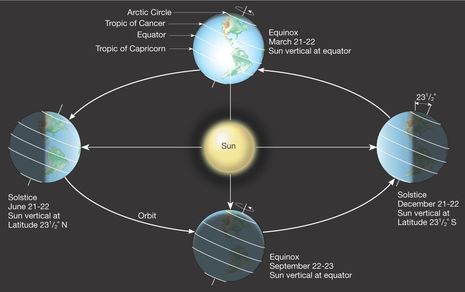
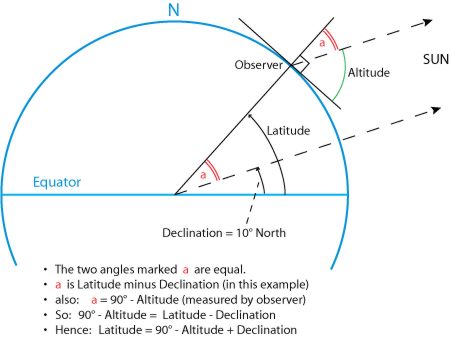
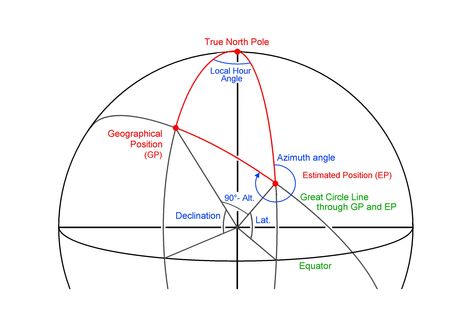


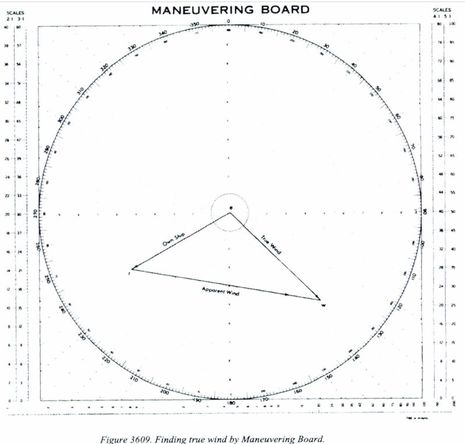
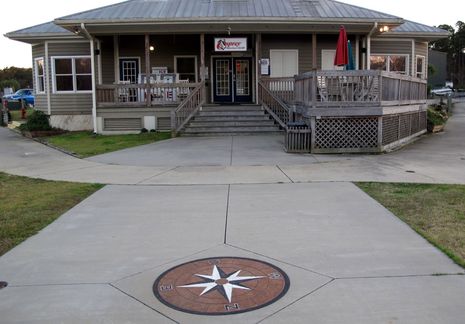
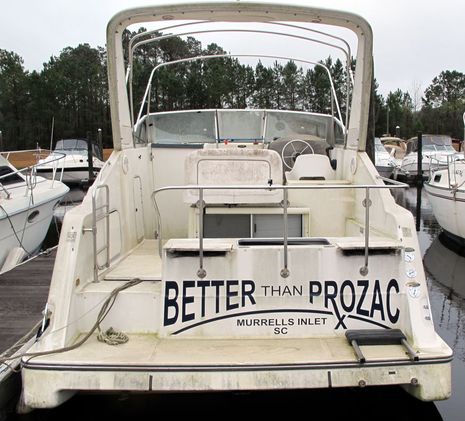

















































 , but I’ll add that you can freely download the underlying
, but I’ll add that you can freely download the underlying 








































